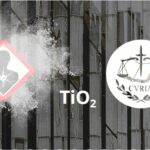
Nanos: between promises and realities

Nanos: Between promises and realities
By the AVICENN team – Last modification October 2022
Caution needed in the face of promises and miracle solutions
More resistant, lighter, antibacterial or anti-UV, brighter, more waterproof, etc. nanos are adorned with a thousand virtues. Rightly so in some cases, but also more questionably so in others. Many are mere announcements and promises of “miracle solutions”1See for example:
– Nanoparticles could one day help “cure the incurable”, scientists say, RMIT University , 18 October 2022
– Technical textiles: between innovation and overbidding, DGCCRF, June 3, 2022
– The super powers of nano-materials, Transition and Energy, January 28, 2020
– Nano-enhanced industrial materials: Preparing for the next European industrial revolution, CORDIS, January 2019
– Nanotechnologies, dreams and promises, conference by Louis Laurent (Paris-Saclay campus project) and Jacques Arnould (CNES), January 2011
– Nanotechnology – Innovation for tomorrow’s world, European Commission, 2004.
The expected or announced benefits of nano applications must therefore be considered carefully and in context. For each of them, the questions should be:
- are the expected benefits, observed in the laboratory, also observable in the real conditions of use of the products?
- who promotes them, evaluates them and on what criteria?
- what needs do they correspond to?
- what is their technical feasibility, their real efficiency?
- what is their real cost to the company? (In addition to the millions of euros from the European Union budget, for example, one would have to add the costs of dealing with adverse effects, clean-up costs if any, etc.).
- what is their added value? are they useful / futile?2See for example:
– Nanotechnologies: between useful and futile…, Gérald Hayotte, CFDT, October 2012
– The wacky world of nanotechnology consumer products, Nanowerk, March 2007: “on one hand you read how billions of dollars are invested worldwide in nanotechnology research and on the other hand the only products you can buy are stain-resistant pants, better golf balls or the ultimate in comfy bedsheets” - who benefits from them?
- have alternatives been considered (simpler / safer / economical / ecological alternatives and social innovation)?
Fortunately, the thoughts and questions on these subjects, rarely expressed in the world of research and development (R&D), are becoming more audible. As evidenced by these words of Natacha Krins reported by the magazine La Recherche: this lecturer at the Laboratory of Condensed Matter Chemistry in Paris (LCMCP), working on nanomaterials for energy (in batteries in particular) testifies: “We don’t always have a global vision of the issues. We work on extremely technical subjects but of very limited scope in relation to the overall problem (climate disruption). For example, the origin of raw materials, the recycling, or even the energy management strategy that it could be integrated into”3Cf. Ecological transition in research: greener chemistry for a sustainable world, La Recherche, 28 March 2022.
In addition to the assessment of the risks associated with nanomaterials, the assessment of the “benefits”, real or supposed, of nanomaterials and the conditions for their fulfillment is urgently needed. The concept of“collective utility” proposed by the PNSE 4 could be the opportunity to start working on this – work also linked to the notions of benefit/risk ratio.
Beware of numbers in the nanos markets
Vigilance is required in the face of fabulous figures4See for example:
– Nanomaterials Market, Zion Market Research, August 2021: “The global Nanomaterials accounted for USD 13.6 Billion in 2020 and are expected to reach USD 26.3 Billion by 2028, growing at a CAGR of around 8.1% between 2021 and 2028”
– Nanotechnology Market 2020, Data Bridge Market Research, August 14, 2020: “The global nanotechnology market is expected to reach $24.56 billion by 2025, growing at a CAGR of 16.5% during the forecast period from 2018 to 2025.” published to quantify the (monetary) “value” of nanotechnology markets. The more confident of the market research or market analysis firms providing these figures, include, for example, the value of objects incorporating nanomaterials and not only the value of the nanomaterials concerned.
These figures must be taken for what they are: “constructions” of interest groups based on assumptions, projections or dreams not necessarily true to reality. They give a false impression of objectivity, which should not hide the mercantile interests of those who promote them and who have an interest in presenting the rise of nanotechnologies as inevitable5See for example:
– Debunking the trillion dollar nanotechnology market size hype, NanoWerk, April 2007
– Potential of nanotechnology: the numbers, the dream and the myth, Paris Tech Review, 2010.
Any questions or comments? This information sheet compiled by AVICENN is intended to be completed and updated. Please feel free to contribute.
Other news on the topic
Upcoming Nano Agenda

- Webconference for analysis laboratories, plant fertilizer manufacturers and distributors, public authorities…
- Moderated by David Krupka, nanotechnologies development manager at AFNOR Normalisation and Emilie Langlois-Bertrand, nantechnologies standardization project manager.
- In partnership with Armand Masion, CNRS Research Director, and Sandrine Mocoeur, Health, Safety, Environment and Quality Manager at SYNGENTA.
- This exchange will also be an opportunity to explore the creation of a national platform to identify standardization needs.
- Website: www.afnor.org/evenement/nanotechnologies-agriculture-cadre-pratique-responsable/
- 8th Congress of Occupational Medicine and Health (CNMST 2026)
- Theme 5: Emerging pathologies and risks, Mr Henri Bastos (ANSES), Pr Lynda Bensefa-Colas (AP-HP), Dr Catherine Nisse (CHU Lille)
- Website: www.medecine-sante-travail.com
- 20th meeting of the “nano and health” dialogue committee
- Organizer: ANSES
File initially created in April 2011
Notes and references
- 1See for example:
– Nanoparticles could one day help “cure the incurable”, scientists say, RMIT University , 18 October 2022
– Technical textiles: between innovation and overbidding, DGCCRF, June 3, 2022
– The super powers of nano-materials, Transition and Energy, January 28, 2020
– Nano-enhanced industrial materials: Preparing for the next European industrial revolution, CORDIS, January 2019
– Nanotechnologies, dreams and promises, conference by Louis Laurent (Paris-Saclay campus project) and Jacques Arnould (CNES), January 2011
– Nanotechnology – Innovation for tomorrow’s world, European Commission, 2004 - 2See for example:
– Nanotechnologies: between useful and futile…, Gérald Hayotte, CFDT, October 2012
– The wacky world of nanotechnology consumer products, Nanowerk, March 2007: “on one hand you read how billions of dollars are invested worldwide in nanotechnology research and on the other hand the only products you can buy are stain-resistant pants, better golf balls or the ultimate in comfy bedsheets” - 3Cf. Ecological transition in research: greener chemistry for a sustainable world, La Recherche, 28 March 2022
- 4See for example:
– Nanomaterials Market, Zion Market Research, August 2021: “The global Nanomaterials accounted for USD 13.6 Billion in 2020 and are expected to reach USD 26.3 Billion by 2028, growing at a CAGR of around 8.1% between 2021 and 2028”
– Nanotechnology Market 2020, Data Bridge Market Research, August 14, 2020: “The global nanotechnology market is expected to reach $24.56 billion by 2025, growing at a CAGR of 16.5% during the forecast period from 2018 to 2025.” - 5See for example:
– Debunking the trillion dollar nanotechnology market size hype, NanoWerk, April 2007
– Potential of nanotechnology: the numbers, the dream and the myth, Paris Tech Review, 2010



